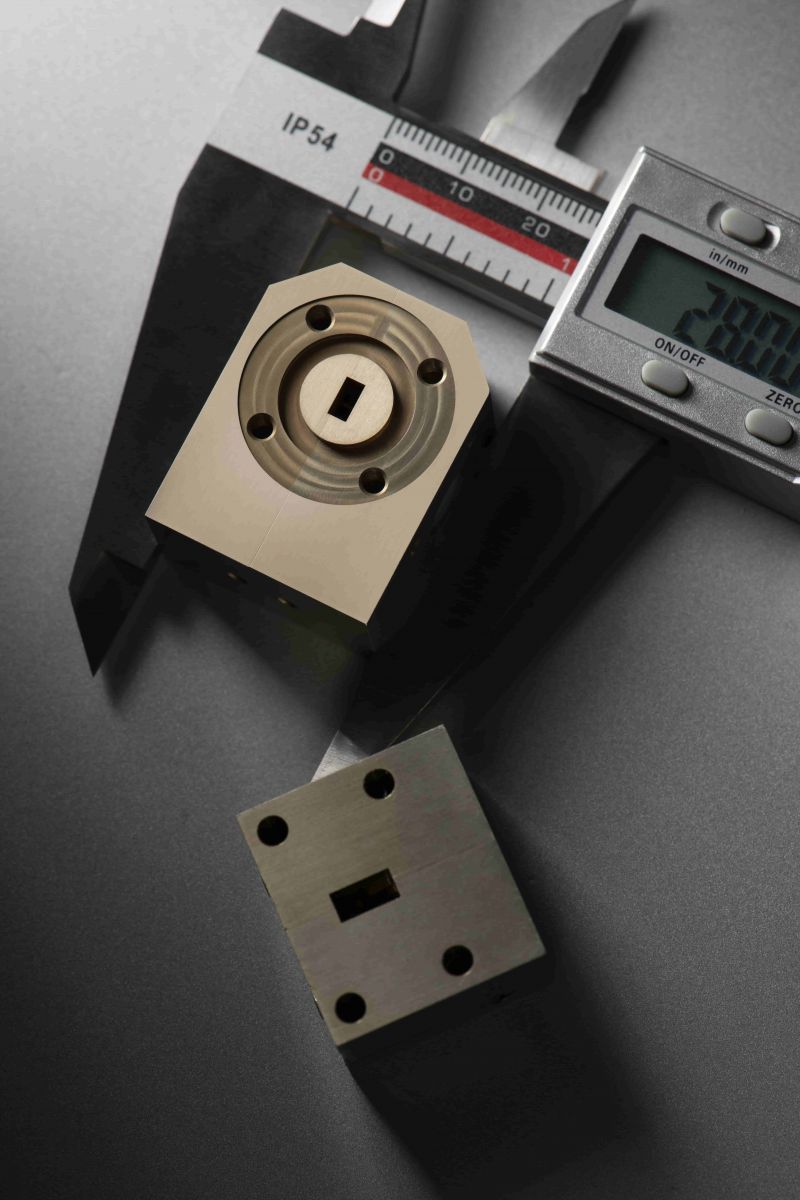- About us
- Product
- Dual-Junction Circulator
-

Dual-junction Microstrip Circulator
-

Dual-junction Drop-in Circulator
-

Dual-junction Coaxial Circulator
- Customized
- Technical Note
- News
- Contact us
Updated on:
Keywords: waveguide circulator, RF circulator, microwave circulator, high-power RF, HzBeat
A waveguide circulator is the preferred RF circulator when your architecture demands high-power RF handling, ultra‑low insertion loss, and stable isolation over temperature. Below we unpack the physics, the design and materials, how it compares with other microwave circulator types, and where it shines in real systems.

In radar, satcom gateways, deep‑space links, and millimeter‑wave test stands, protecting front‑ends and managing duplex paths depend on non‑reciprocal components. A waveguide circulator routes energy sequentially between ports with very low loss while maintaining high reverse isolation. Unlike planar transmission lines, metallic rectangular waveguides propagate low‑attenuation modes (typically TE10) and offer generous surface area for heat spreading, enabling robust operation at X‑, Ku‑, K‑, and Ka‑bands under demanding average and peak power.
A circulator is a passive, non‑reciprocal three‑port junction directing power 1→2, 2→3, and 3→1. In ferrite implementations, the effect originates from the gyromagnetic precession of a magnetized ferrite puck in a static bias field. Inside a precision‑machined cavity, the ferrite couples to the rotating RF magnetic field; with correct bias and geometry, the junction establishes a 120° phase progression that yields circulation with low insertion loss and useful bandwidth.
Design levers: saturation magnetization (Ms), dielectric constant (εr), resonance linewidth (ΔH), bias margin, tuner topology, cavity symmetry, and temperature coefficients. Each lever trades isolation, bandwidth, and physical size.
Rectangular waveguides exhibit low conductor loss and high breakdown thresholds. Well‑designed units routinely achieve sub‑dB insertion loss while tolerating kilowatt‑class peak powers and high duty cycles—ideal for radar transmit chains and HPA interfaces.
With appropriate ferrites and magnet assemblies, 20–30+ dB isolation is practical over wide bands. Mechanical rigidity of the waveguide housing preserves symmetry, keeping isolation and VSWR stable across vibration and temperature cycling.
Standard waveguide interfaces (e.g., WR‑90, WR‑75, WR‑62) and tuner elements permit low return loss across the passband, minimizing reflections into sensitive LNAs and high‑gain PAs.
All‑metal construction, robust magnet biasing, and proven ferrite physics deliver long field life in airborne, maritime, and outdoor gateway installations.
Microstrip/stripline circulators are compact and economical at low‑to‑moderate power. At higher microwave bands, dielectric and conductor losses rise and thermal density becomes limiting. Waveguide circulators offer lower attenuation and much higher thermal headroom.
Drop‑ins integrate easily inside modules and excel up to mid‑microwave bands. For very high peak/average power, the larger aperture and metallic walls of waveguide units spread heat and keep field strengths below breakdown thresholds.
Coaxial circulators provide convenient connectorized coverage and good bandwidth. At mm‑wave and high power, rectangular waveguides generally win on attenuation, isolation robustness, and power handling.
Low‑loss garnet or spinel ferrites (including YIG variants) are magnetized using permanent magnets or electromagnets. The parameters Ms, εr, and ΔH govern resonance, junction size, insertion loss, and temperature drift. Designers allocate bias margin to avoid isolation collapse over temperature and aging.
Housings are CNC‑machined aluminum or copper with plated interiors to minimize skin loss. Short‑wall modifications, tuning screws, and dielectric posts flatten the passband and reduce sensitivity to assembly tolerances. Tight flatness and repeatable torque are critical to preserve field symmetry.
High‑power RF dissipates heat in ferrites and metal walls. Designs add thick bases, conduction paths to the chassis, and—when necessary—heat spreaders. Mechanical alignment and magnet shimming keep the junction centered, stabilizing isolation and return loss under shock and thermal cycling.

Engineering checklist: target band & guide size (e.g., WR‑90 for 8.2–12.4 GHz); isolation target (>20 dB); insertion loss (sub‑dB); average/peak power & duty; ferrite selection (Ms, εr, ΔH); magnet topology; thermal path; environmental sealing.
HzBeat engineers and manufactures waveguide circulator solutions across wide bands from 20 MHz to 200 GHz. Our portfolio includes low‑loss ferrite junctions, custom magnet assemblies, and precision CNC housings optimized for high‑power RF service in radar, satcom, and instrumentation. Explore current offerings and customization:
When your RF chain must minimize loss and heat at microwave bands while sustaining high average or peak power, a waveguide circulator provides the cleanest attenuation profile, strongest thermal margins, and most reliable isolation. With correct ferrite selection, bias margin, and mechanical symmetry, you protect PAs and LNAs, stabilize duplexers, and preserve link budgets in the harshest environments.
About the Author
HzBeat Editorial Content Team
Marketing Director, Chengdu Hertz Electronic Technology Co., Ltd. (Hzbeat)
Keith has over 18 years in the RF components industry, focusing on the intersection of technology, healthcare applications, and global market trends.